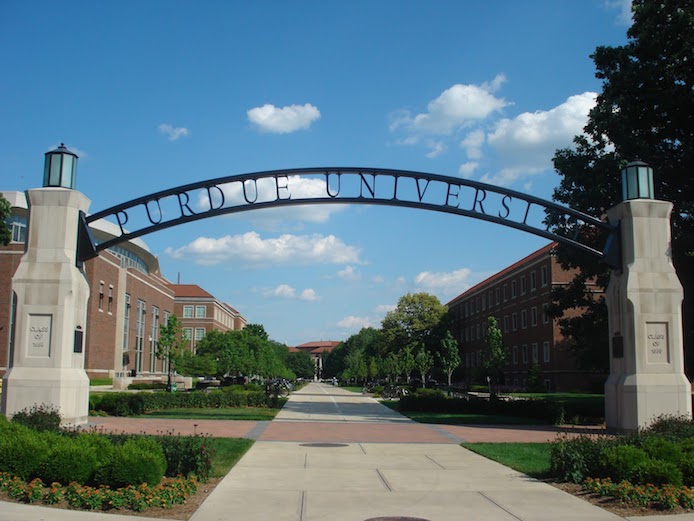Are you a natural problem-solver? Have you always excelled in math and science? Do you find yourself identifying needs in your community and looking for solutions? If the answer is yes, you might want to consider pursuing an engineering degree in college, where you can learn technical skills like data analysis and dive into emerging subfields like biotechnology, environmental engineering, computer engineering, and nanotechnology.
A word of caution: although engineering majors graduate with some of the highest starting salaries, the curriculum is incredibly rigorous, as is the time commitment.
To gain admission to a prestigious undergraduate engineering program, applicants must demonstrate quantitative skills and a strong performance in high-level math and science courses, in addition to a top overall GPA, strong ACT/SAT scores, the highest AP scores in STEM fields, and additional proficiency in engineering-adjacent subjects like computer science.
When it comes to APs, engineering schools expect to see a high score on the AP Calculus BC exam (ideally taken junior spring at the latest). Other important AP exams include:
- AP Calculus AB
- AP Statistics
- AP Computer Science A
- AP Computer Science Principles
- AP Physics 1
- AP Physics 2
- AP Physics C: Electricity and Magnetism
- AP Physics C: Mechanics
- AP Chemistry

AP Exam Tutoring
Our tutors offer customized tutoring designed to fit the needs of each student.
FIVE STRONG UNDERGRADUATE PROGRAMS IN ENGINEERING
Harvey Mudd College

Harvey Mudd College, located in Claremont, CA, is part of the Claremont Colleges consortium but focuses on math, science and engineering. Its single, broad engineering program is consistently rated one of the best in the country. Each major can create their own engineering specialty—from biomedical to chemical, computer to electrical, environmental to mechanical—through elective courses and Engineering Clinic projects. Core engineering classes typically have 20-80 students, though electives are often much smaller. Regardless of the course level, all courses at Harvey Mudd are taught by professors versus TAs. Harvey Mudd’s unique Engineering Clinic Program, founded in 1963, brings together teams of junior and senior students with faculty advisors to work on industry-sponsored projects with external liaison engineers. Harvey Mudd’s Department of Engineering also hosts research programs on campus to sponsor cutting edge research funded by foundations and government agencies like the Hearst Foundation and NIH. These programs create unique opportunities for undergraduate students to publish in peer-reviewed journals and participate in conferences—which makes them more compelling graduate school applicants, should they pursue that route.
Massachusetts Institute of Technology (MIT)

MIT’s top-ranked undergraduate engineering program offers programs in Aeronautics and Astronautics, Biological Engineering, Chemical Engineering, Civil and Environmental Engineering, Electrical Engineering and Computer Science, Materials Science and Engineering, Mechanical Engineering, and Nuclear Science and Engineering. The University’s many resources on campus include the MakerLodge, where students can use advanced equipment, and MIT.nano, a research facility for nanoscale research projects. Other resources, like the New Engineering Education Transformation (NEET), invites students to create their own cross-disciplinary projects. Or, for students who hope to combine engineering training with business experience, the MIT Sandbox Innovation Fund Program provides the funds to jumpstart student ideas.
Stanford University

All Stanford engineering students begin their coursework with Engr 1: “Want to Be an Engineer?” where they learn fundamental technical tools and skills. Although engineering students must complete a number of required courses to fulfill the major, they must also fulfill the general requirements at Stanford as part of their liberal arts training. Approximately 10 percent of engineering majors choose to double major. In addition to the 10 available engineering majors (including Atmosphere and Energy, Bioengineering, Civil Engineering, and Product Design), students may also design their own Individually Designed Major in Engineering (IDMEN). In the past, students have designed unique majors that reflect their interests and career goals such as Art & Architecture in Engineering and Neural Cybernetics & Engineering.
Carnegie Mellon University

Carnegie Mellon offers Bachelor of Science degrees in a wide range of engineering fields: Chemical Engineering, Civil Engineering, Electrical and Computer Engineering, Environmental Engineering, Mechanical Engineering, and Materials Science and Engineering. Carnegie Mellon would be a particularly strong choice for students who are invested in the intersection of engineering and public policy and want to pursue a more interdisciplinary major such as “Science, Technology, and Public Policy” or a minor in “Information Security, Privacy and Policy.” These students go on to pursue jobs in business, government, and non-profits. The five-year MBA program, a partnership between the College of Engineering and the Tepper School of Business, would be a great fit for students who want to manage and lead civic and environmental engineering organizations. Juniors also have opportunities to gain real world experience working with faculty on research projects.
Purdue University

Purdue University, located in West Lafayette, Indiana, is a public university with 32,672 undergraduate students. Known for its strong engineering program and notable alumni, including Neil Armstrong, 31 percent of undergraduate students at Purdue study in the College of Engineering. Students can choose from 17 engineering majors and minors and also have the option to customize their major through unique multidisciplinary engineering concentrations such as acoustical engineering, educational engineering, and theater engineering. Purdue’s engineering program has made a concerted effort to support its diverse student body through programs like the Women in Engineering Program (WIEP) and the Minority Engineering Program (MEP).
DUAL-DEGREE ENGINEERING PROGRAMS
For students who want to take advantage of a liberal arts curriculum AND earn their engineering degree, a dual-degree program (often called a 3-2 program) could be a perfect fit. These five-year dual degree programs allow students to spend three years at a liberal arts school, where they earn a B.A. in a relevant field (physics, math, chemistry, etc.) and then two years at an engineering school, where they earn a B.S. or B.E. Columbia University’s engineering school, for example, partners with almost 100 liberal arts colleges across the country. If this seems interesting to you, it’s worth reaching out to the faculty member who serves as the 3-2 liaison at partner schools. This professor would be a great contact during campus visits to learn more about the requirements and procedures at a specific college. At Colby College, for instance, students accepted to the program graduate from Colby and obtain an engineering degree from either Dartmouth College or Columbia University. The Columbia Combined Plan program may also be completed as a 4-2 sequence: four years in a liberal arts curriculum and two years in Columbia Engineering. Typically, only 8-10 students are admitted to this selective program each year.
Prospective students should consider the pros/cons of a rigorous dual-degree program:
PROS:
- Students may take advantage of a liberal arts college with more interaction with professors, smaller classes, and more intimate learning environment.
- Graduating students are more competitive on the job market with two degrees and more marketable skills.
- Students get to experience campus life and research opportunities at two selective institutions.
CONS:
- Students are not guaranteed admission to a 2-year engineering program, even if their college has a partnership with a larger engineering school.
- Due to the extra year of coursework, students may face a financial burden.
- Socially, it can be difficult to leave friends and a familiar college environment to begin somewhere new after three years.
FOUR ADDITIONAL ENGINEERING SCHOOLS THAT OFFER DUAL-DEGREE PROGRAMS
Dartmouth College: Dartmouth’s Dual-Degree Program is for students at other liberal arts colleges who want to study engineering at Dartmouth (see list of participating schools here). You’ll spend your junior or senior year at Dartmouth, receive your bachelor’s degree from your home school, and then return to Dartmouth to complete a fifth year of engineering studies in the Bachelor of Engineering (BE) program.
Columbia University: The Columbia Combined Plan program is usually completed as a 3-2 sequence: three years in a liberal arts curriculum and two years in Columbia Engineering (with students applying junior year). The program may also be completed as a 4-2 sequence: four years in a liberal arts curriculum and two years in Columbia Engineering (with students applying senior year).
Washington University in St. Louis: Students who graduate from WashU’s dual degree program are “liberally educated engineers,” who have gained a background in the humanities and social sciences alongside their technical education. Students typically follow a 3-2 or 4-2 schedule as they work towards their two degrees. A third option allows students to complete a liberal arts degree from their current school followed by an engineering undergraduate degree and engineering master’s degree in three years at WashU.
Caltech: Current juniors at a select group of liberal arts colleges are eligible to transfer to Caltech for an additional two years in residence. After completing their requirements, 3/2 students will earn a bachelor of science degree from Caltech as well as a second bachelor’s degree from their home liberal arts college. The eligible liberal arts colleges are: Bowdoin College, Bryn Mawr College, Grinnell College, Haverford College, Mt. Holyoke College, Oberlin College, Occidental College, Ohio Wesleyan University, Pomona College, Reed College, Spelman College, Wesleyan University, and Whitman College.
Follow us on Instagram @toptieradmissions for more tips and the latest admissions news!
- Introducing the New Ivies - May 9, 2024
- Penn’s Record-Breaking Admissions Cycle - April 5, 2024
- Strong Programs in Classics - April 3, 2024



4 replies on “Strong Programs in Engineering”
Not to be a ranking polemicist, but Harvey Mudd? US News ranks them only among LACs. Purdue is #8, but really an average school as regards admissions education and salary metrics. And what about Cornell and Michigan both in the top 10? Not as good as Harvey Mudd? Didn’t someone on the TTA staff attend there? Biased much?
Thanks for your note! Our goal was to highlight a range of programs–not just Ivies. While no one on our team attended Harvey Mudd, it’s a great example of a small LAC that offers a rigorous STEM curriculum, and would be a great fit for some (not all) students. We always urge families to be wary of US News rankings–there are many other factors to consider when choosing the best school and academic program for a particular student.
Olin College of Engineering off the list?
MIT ranked Olin as best program in its own publication….
Thank you for your comment! Our list simply represents a sampling of strong engineering programs and is not meant to be an exhaustive list.